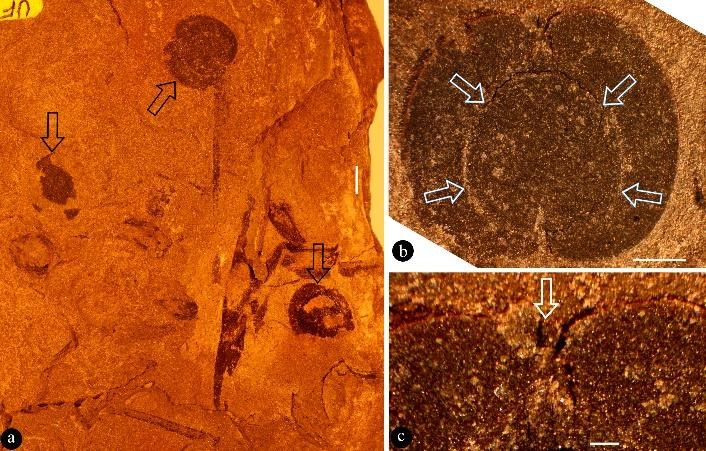
A new study by Prof. WANG Xin from the Nanjing Institute of Geology and Palaeontology, Chinese Academy of Sciences (NIGPAS) reported a new angiosperm fruit, Dilcherifructus mexicana gen. et sp. nov, from the Middle Jurassic of Mexico.
This is currently the earliest record of angiosperms in North America, and its geographical position indicates that angiosperms were already widespread in the North Hemisphere during the Jurassic.
The study was published in Biosis: Biological Systems. It prompts a rethinking on the history of angiosperms and related hypotheses.
The fossil was collected from an outcrop of the Simon Formation near Tezoatlán, nine miles south of the city Tezoatlan, Oaxaca, Mexico. It preserved as coalified compressions embedded in yellowish siltstones.
By using stereomicroscope equipped with a digital camera, Prof. WANG found that the fruits are round-shaped, with an apical and a basal depressions, 10-13.6 mm long, 10-13 mm wide, including a seed and an enclosing pericarp. The pericarp has a smooth surface, and the seeds are inside the fruits, round in shape, approximately 8 mm long and 6-9 mm wide.
A persistent style 76 μm long and 30 μm wide is in the apical depression. Epidermal cells of the exocarp are polygonal or rectangular in shape, 20-60 μm long, 13-38 μm wide. Anomocytic stoma is surrounded by approximately five epidermal cells, 36 μm long, 36 μm wide, with a slit 25 μm long, 5.4 μm wide, level with neighboring epidermal cells.
"If Dilcherifructus were taken as a seed, less hard seed content enclosed by a hard seed coat should not be visible for an observer. The situation in Dilcherifructus is on the contrary: the inside content is obvious," said Prof. WANG.
This observation suggests that the internal body in Dilcherifructus is harder than the enclosing layer, a case frequently seen in angiosperm fruits: seeds inside ovary usually are harder than the enclosing fleshy ovarian wall and thus visible when squashed. The distal projection in Dilcherifructus is interpreted as a persistent style on the tip of a fruit, as frequently seen in angiosperms.
Its Jurassic age suggests that origin of angiosperms is much earlier than widely accepted, while its occurrence in the North America indicates that angiosperms were already widespread in the Jurassic, although they were still far away from their ecological radiation, which started in the Early Cretaceous.
This research was supported by the Strategic Priority Research Program (B) of Chinese Academy of Sciences and the National Natural Science Foundation of China.

Fig. 1 General morphology of Dilcherifructus mexicana gen. et sp. nov and its details (Image by NIGPAS)

Fig. 2 SEM images of stomata on the surface of the fossil fruit (Image by NIGPAS)

86-10-68597521 (day)
86-10-68597289 (night)

52 Sanlihe Rd., Xicheng District,
Beijing, China (100864)

